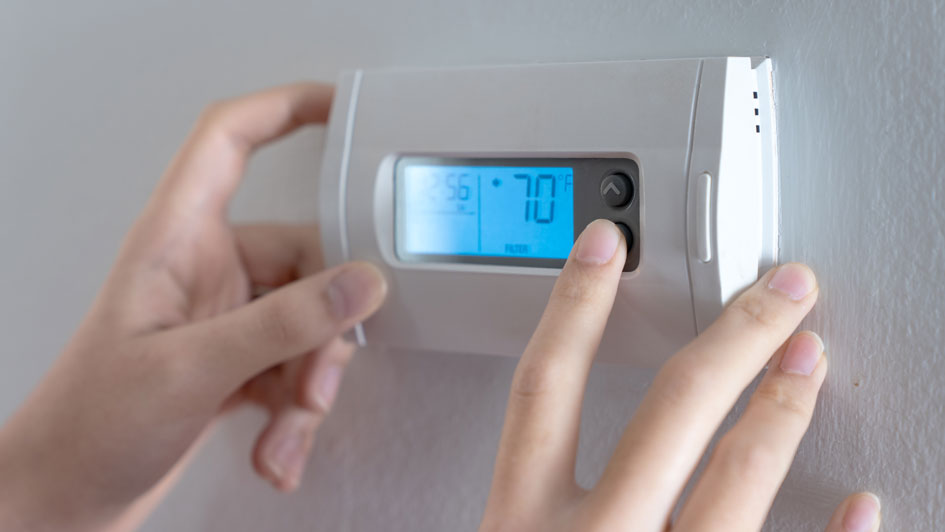
We all like saving money on our monthly utility bills, but it turns out there’s a way to do it when you aren’t even home.
The secret is your thermostat. By using automatic schedules, you can help the thermostat plan for your preferred temperatures. You can create a number of automated temperature settings for when you’re home, away or even when you’re asleep.
With a few simple adjustments, you have more time to enjoy pleasant temperatures while cutting down your energy bills. Here are some ways your thermostat can be a source of energy savings:
While at Home
When you’re home, you want comfortable temperatures. For the most part, you probably have your thermostat lower in the summer while you are in the house to make the most of the cool air.
But the ideal temperature for when you're in your home during the summer is actually around 78 and 80 degrees Fahrenheit. With this adjustment, you'll avoid the worst of summer while still lowering your monthly energy bill.
While Out of the House
If you're setting the temperature for whenever you're gone, the majority of homeowners will set the thermostat higher than you would if you were in the house.
If your home is located somewhere a little cooler, you can set the temperature as high as 88 degrees while no one is home before you adjust it back to the sweet spot of 78-80 degrees when you or a family member return. This way, your air conditioning system isn't working around the clock to provide cooling for a bunch of empty rooms.
While Asleep
When it comes to sleeping in the summer, you want your thermostat set at a comfortable temperature. A great place to start is between 68-72 degrees Fahrenheit. There's less risk of getting too hot or too cold while you're trying to sleep.
Other Strategies for Lowering Energy Use:
- Smart thermostat installation: Switching to a smart thermostat in the summer can lower energy costs as it forms temperature schedules according to your lifestyle and idea of what comfortable is. A smart thermostat manages the temperature if you are home or sleeping, while allowing it to warm up when the house is empty. Using reputed brands and models such as the Lennox iComfort, you have the ability to remotely access and change the temperature through your smartphone, tablet or laptop. Planning smart thermostat installation in your Huntingburg home is an effortless way to set the correct temperature no matter where you are.
- Update your existing HVAC system: A high-efficiency HVAC system is another great option for long-term energy savings. With greater energy efficiency, you can also count on lower utility bills since more efficient equipment requires less energy to achieve comfortable temperatures. Air conditioning installation in Huntingburg is only a phone call away, so don't hesitate to reach out to local pros like Dearing's Service & Solutions who can set you up for success.
- Stay on top of routine AC maintenance: Investing in or ignoring regular air conditioning maintenance in Huntingburg can have a big impact on your monthly energy use. With regular cleaning of the coils, checking for damage and keeping vents clear of dust and debris, you may notice your HVAC system run more efficiently. Increasing efficiency also limits strain on the unit and lowers operational costs, resulting in lower energy usage and subsequently, smaller bills.
- Clean or replace the air filter on a regular basis: A regular schedule for cleaning or replacing the HVAC system's air filter saves money by helping air flow efficiently through your air conditioner. When filters become clogged, an AC unit has to work harder, and the added strain may impact the system’s life span and lead to breakdowns.
- Check your attic insulation: Insulation is one of the key components in any energy-efficient home, securing the hot air outside and the cool air inside during the summer. The North American Insulation Manufacturers Association (NAIMA) offers an official recommendation stating homeowners in souther states should install at least 13-14 inches of insulation, while states further north need 16-18 inches.
- Inspect your air ducts: A leak in the air ducts could increase your energy bills much more than 20 percent, plus it can potentially allow harmful emissions from your water heater, clothes dryer and other appliances throughout your home. Checking your ductwork for leaks and sealing them can fix both of those problems.
- Seal all other leaky spots in your home: Sealing up other leaks in your home with caulk, foam sealant or weather-stripping can help keep it cooler on hot summer days. It’s also important to check for any gaps around windows, doors and even outdoor fixtures. Taking the time to seal up any leaks now can help you save a lot in the long run.
